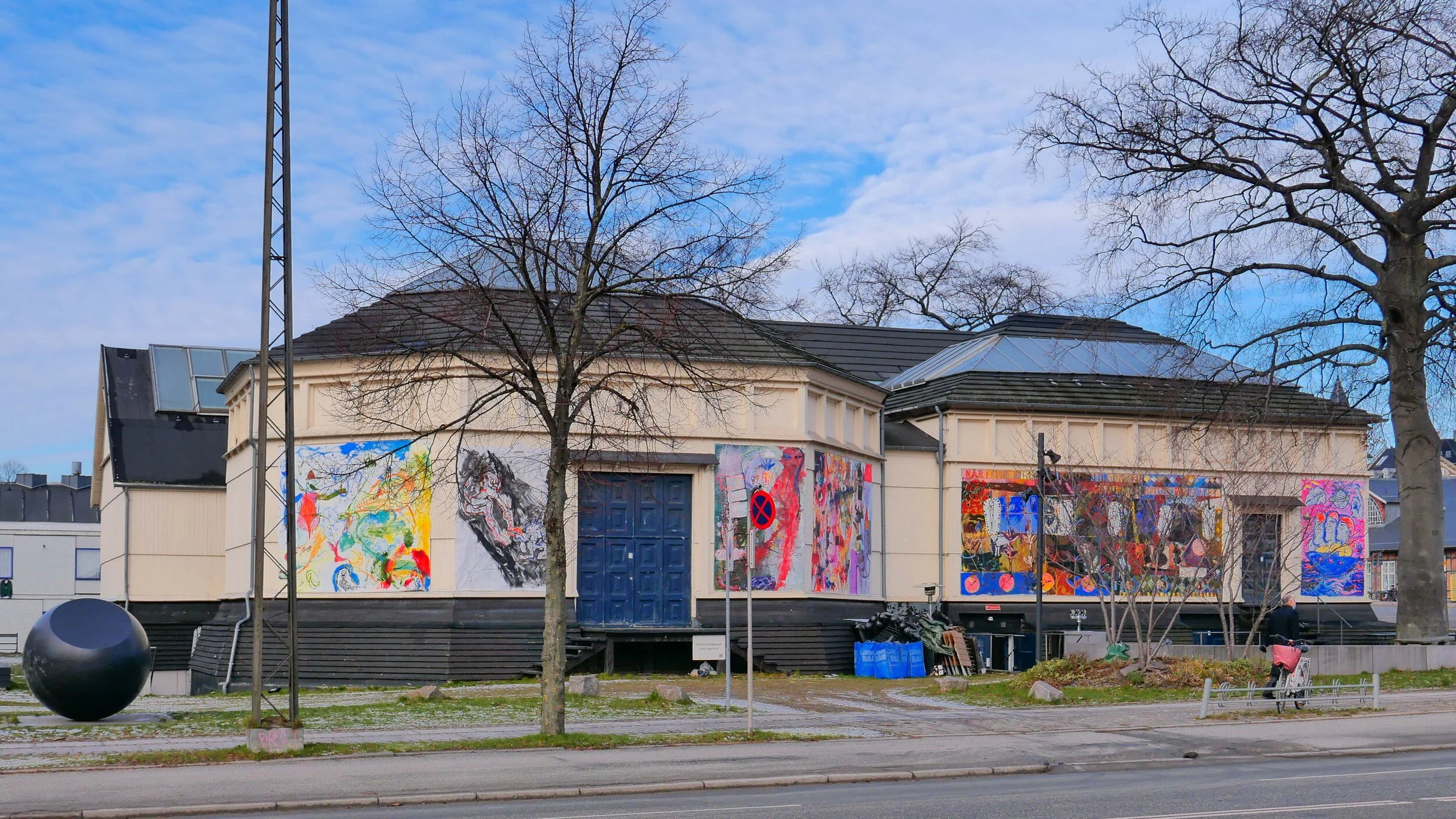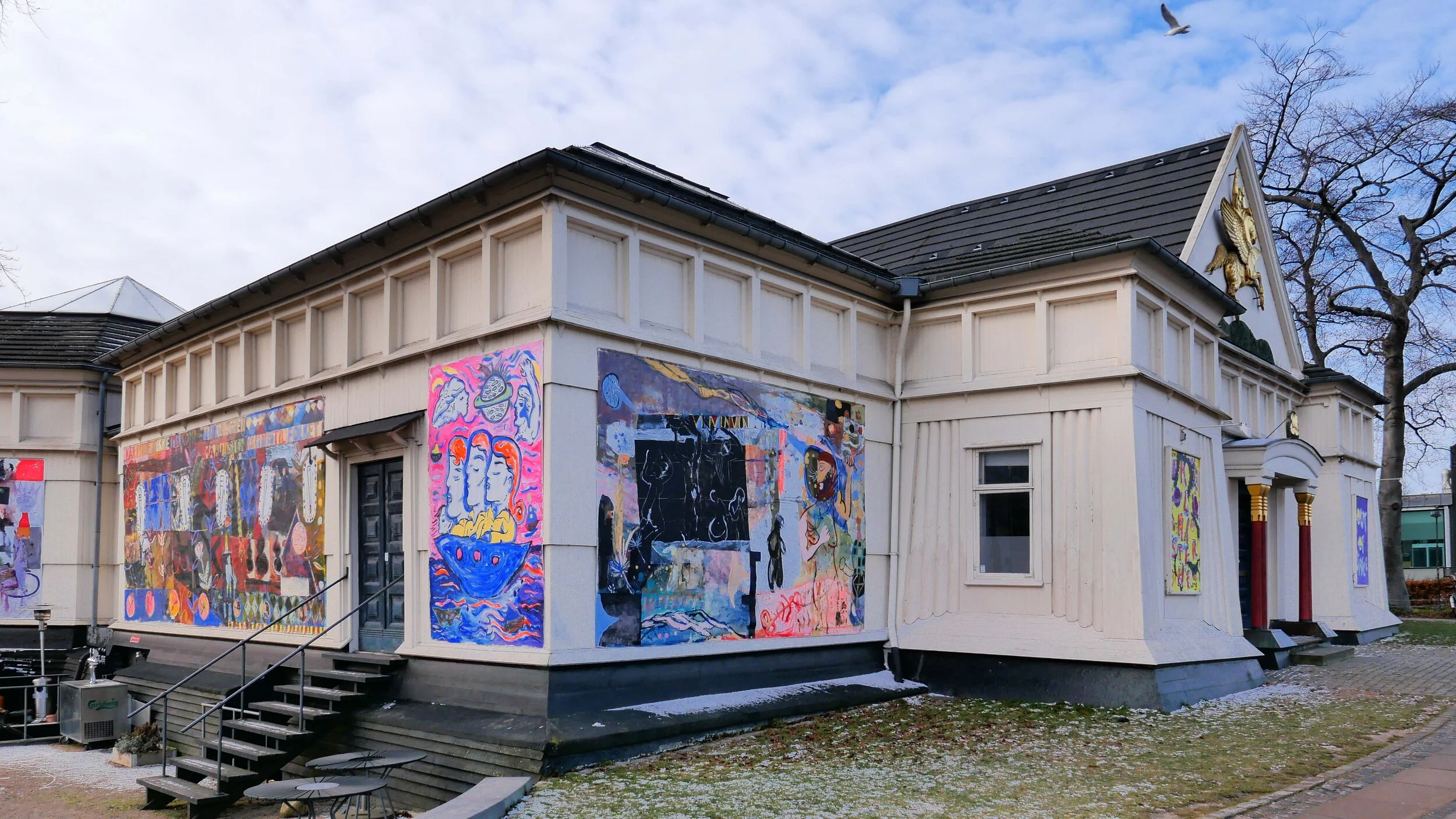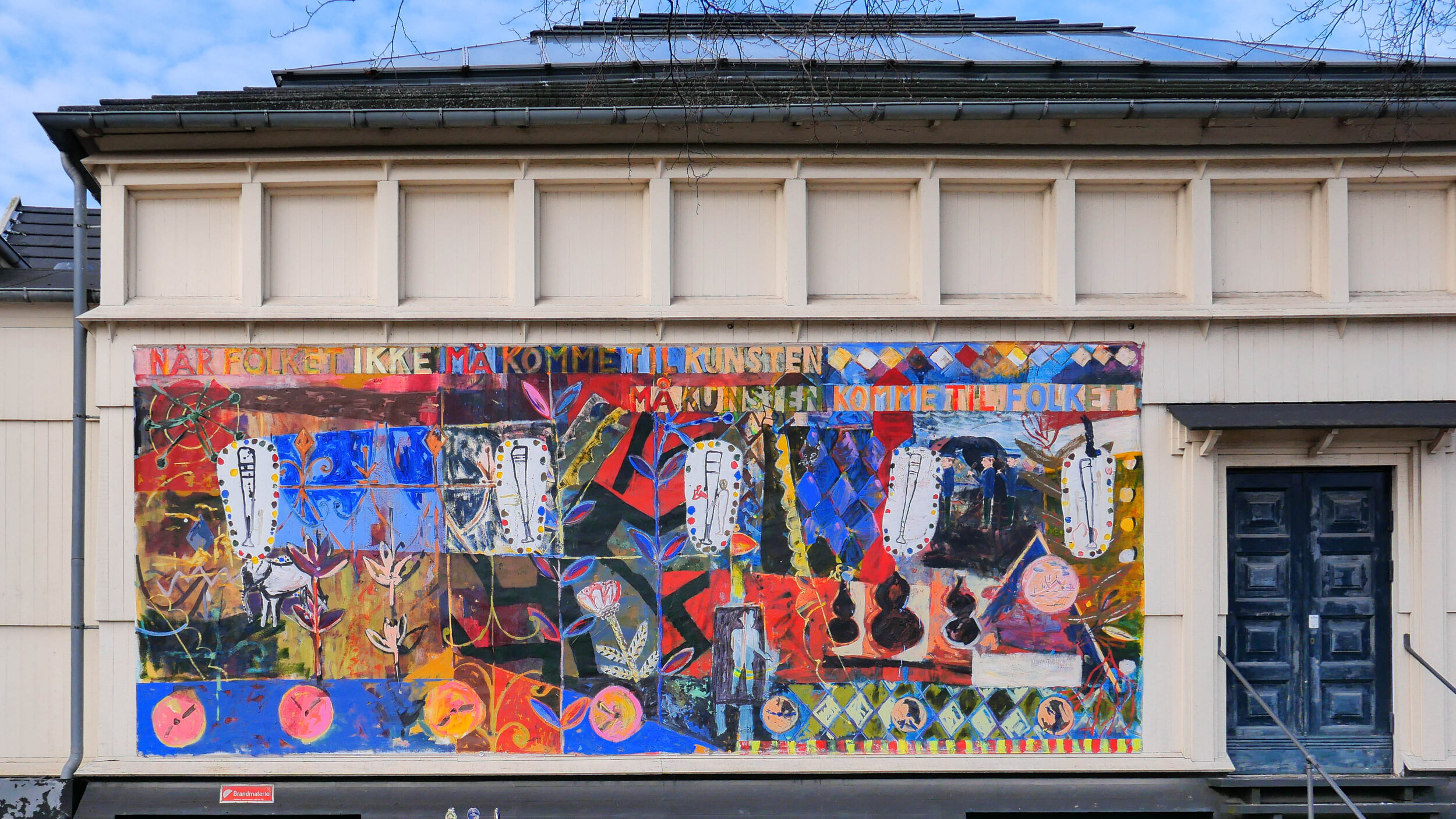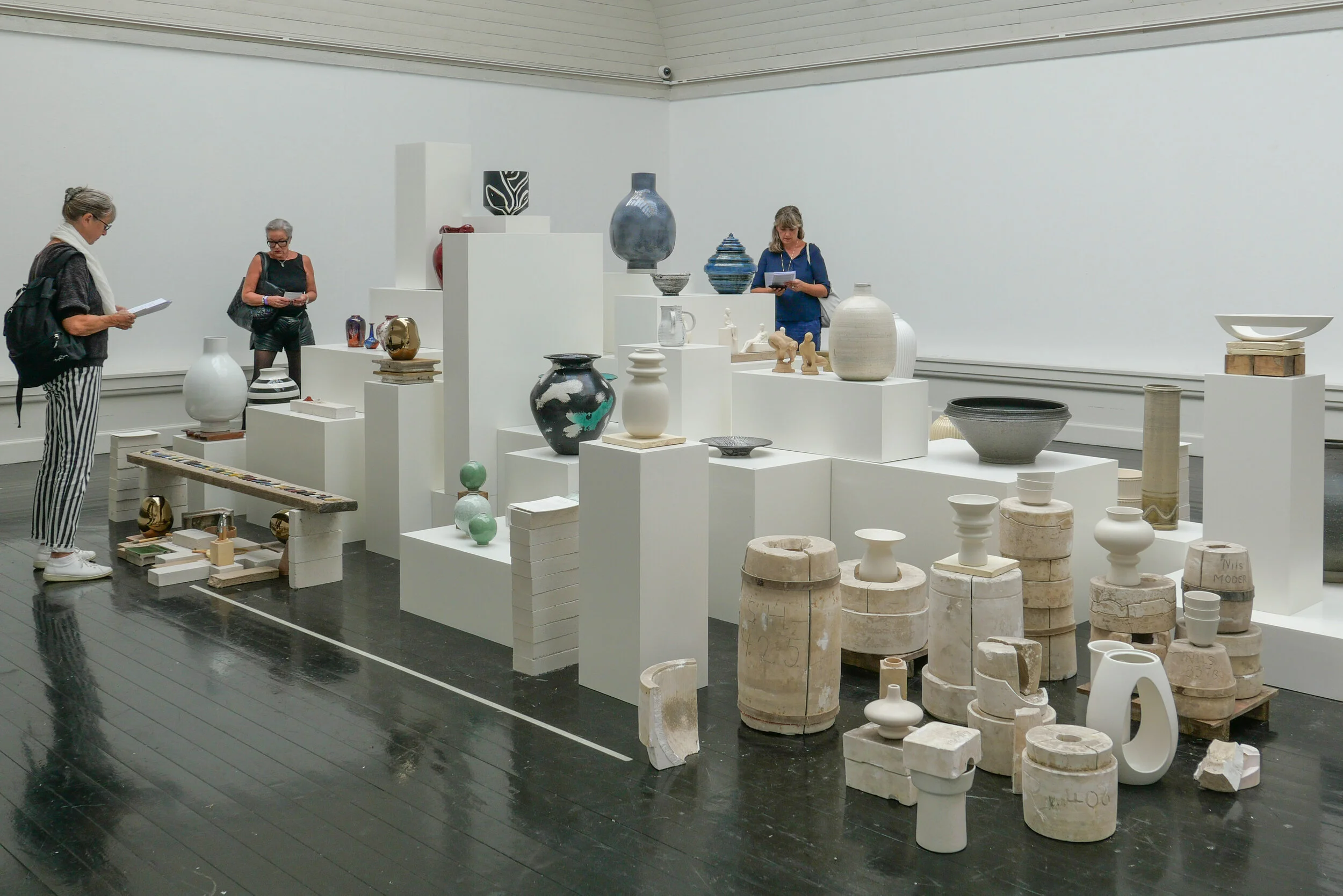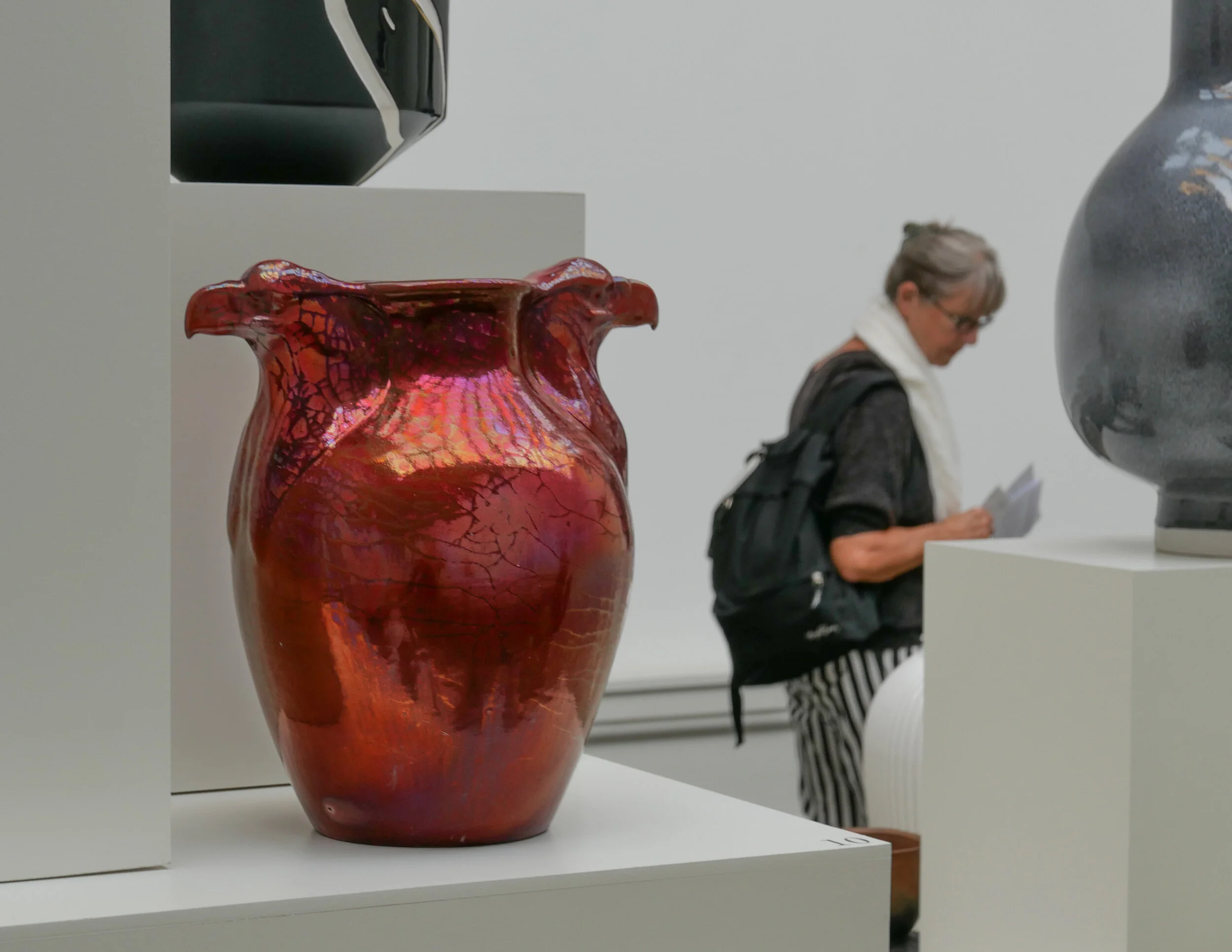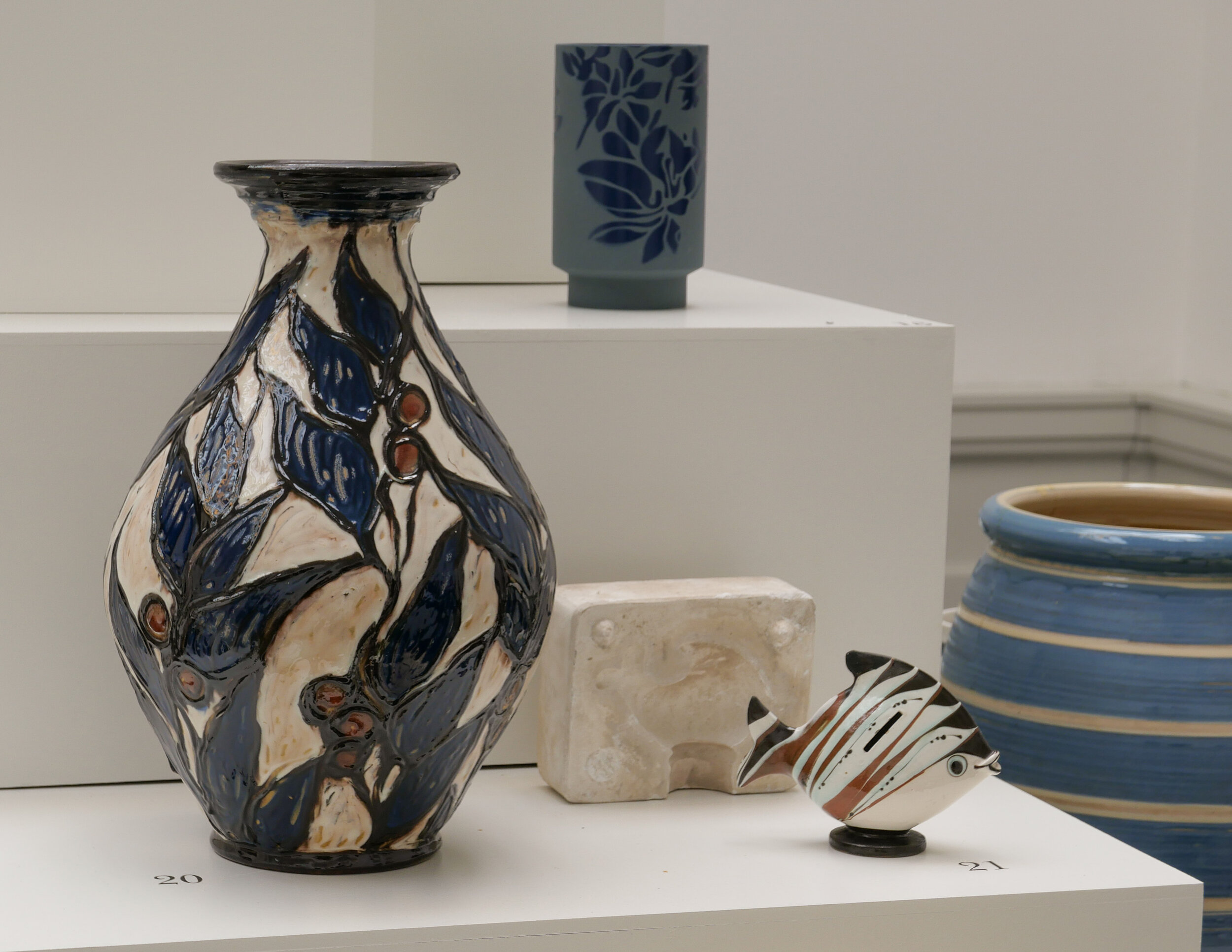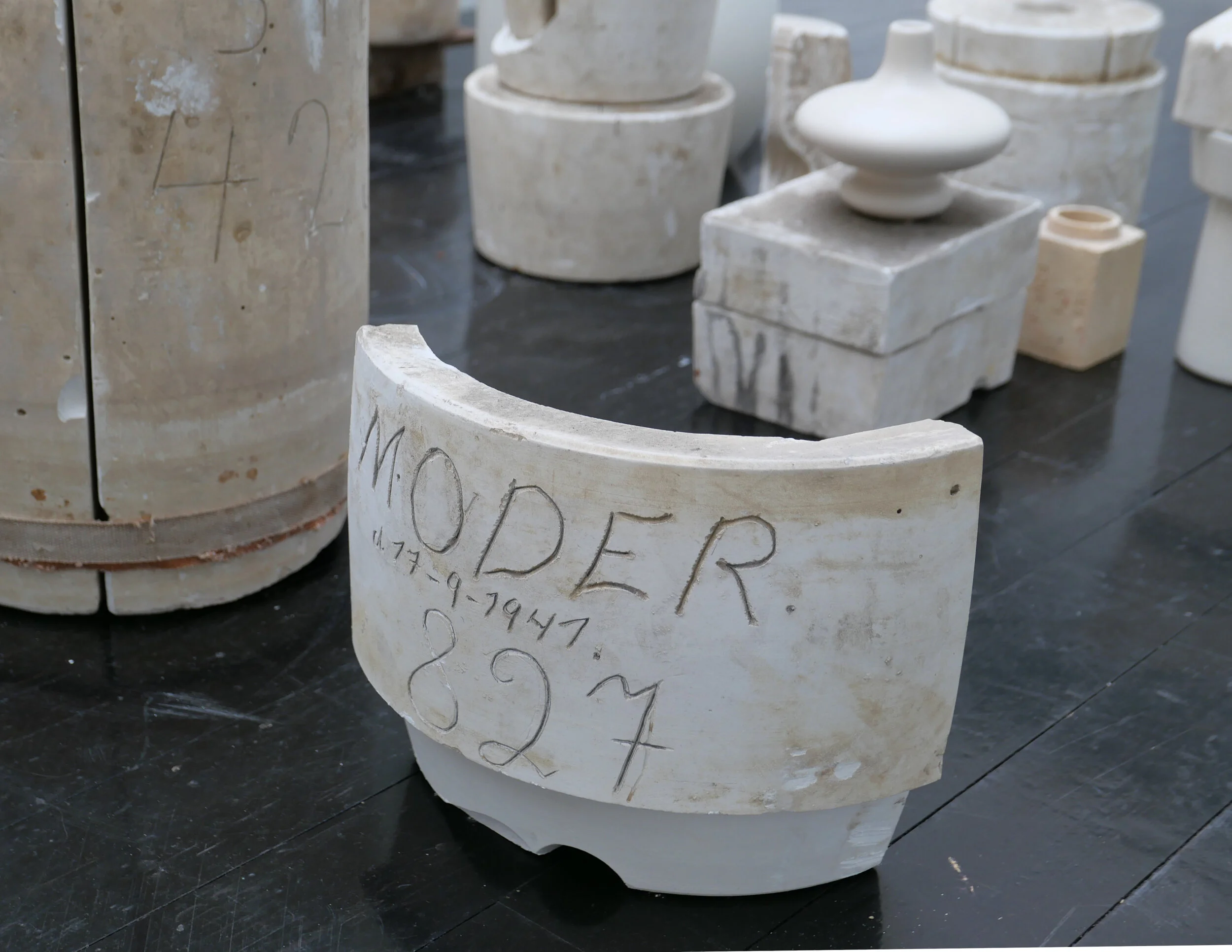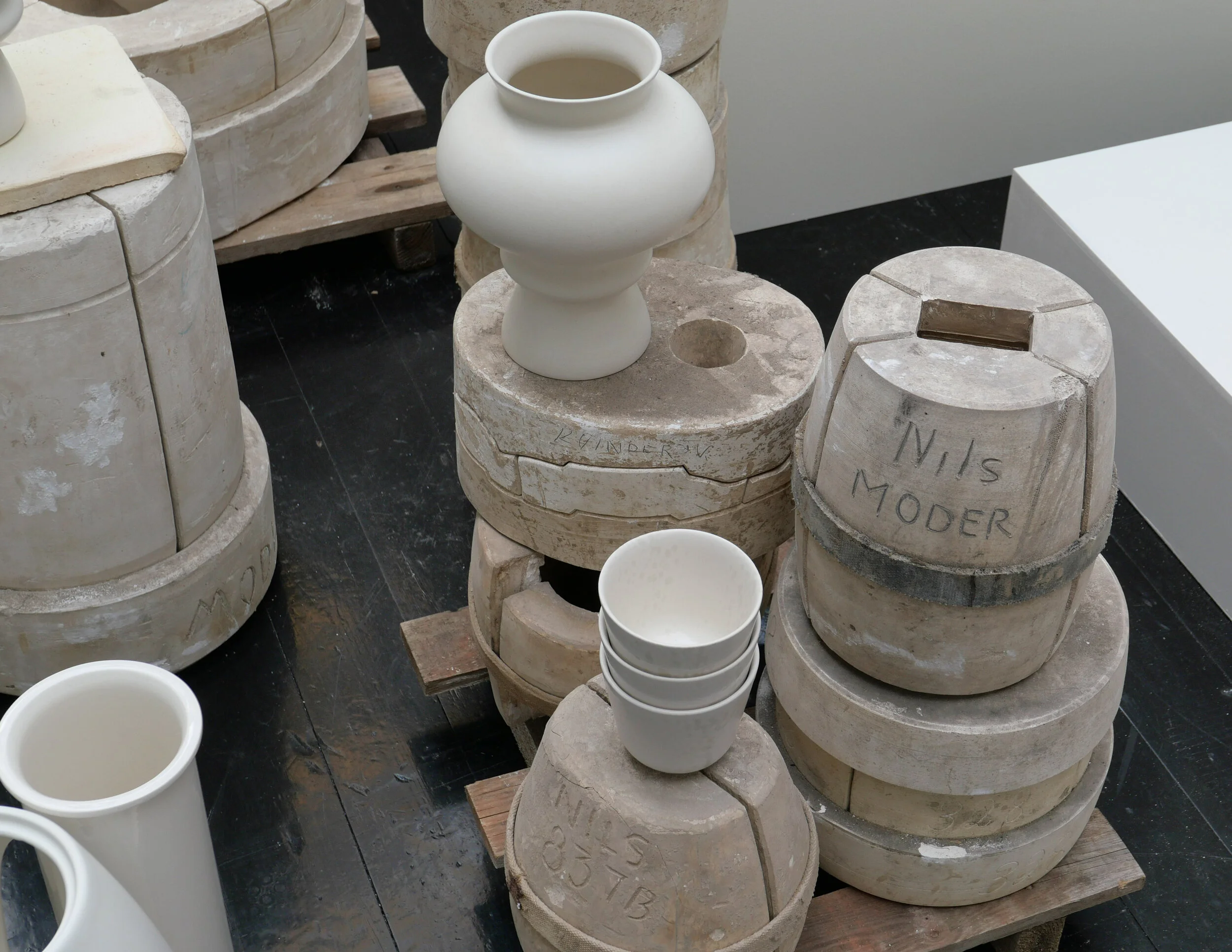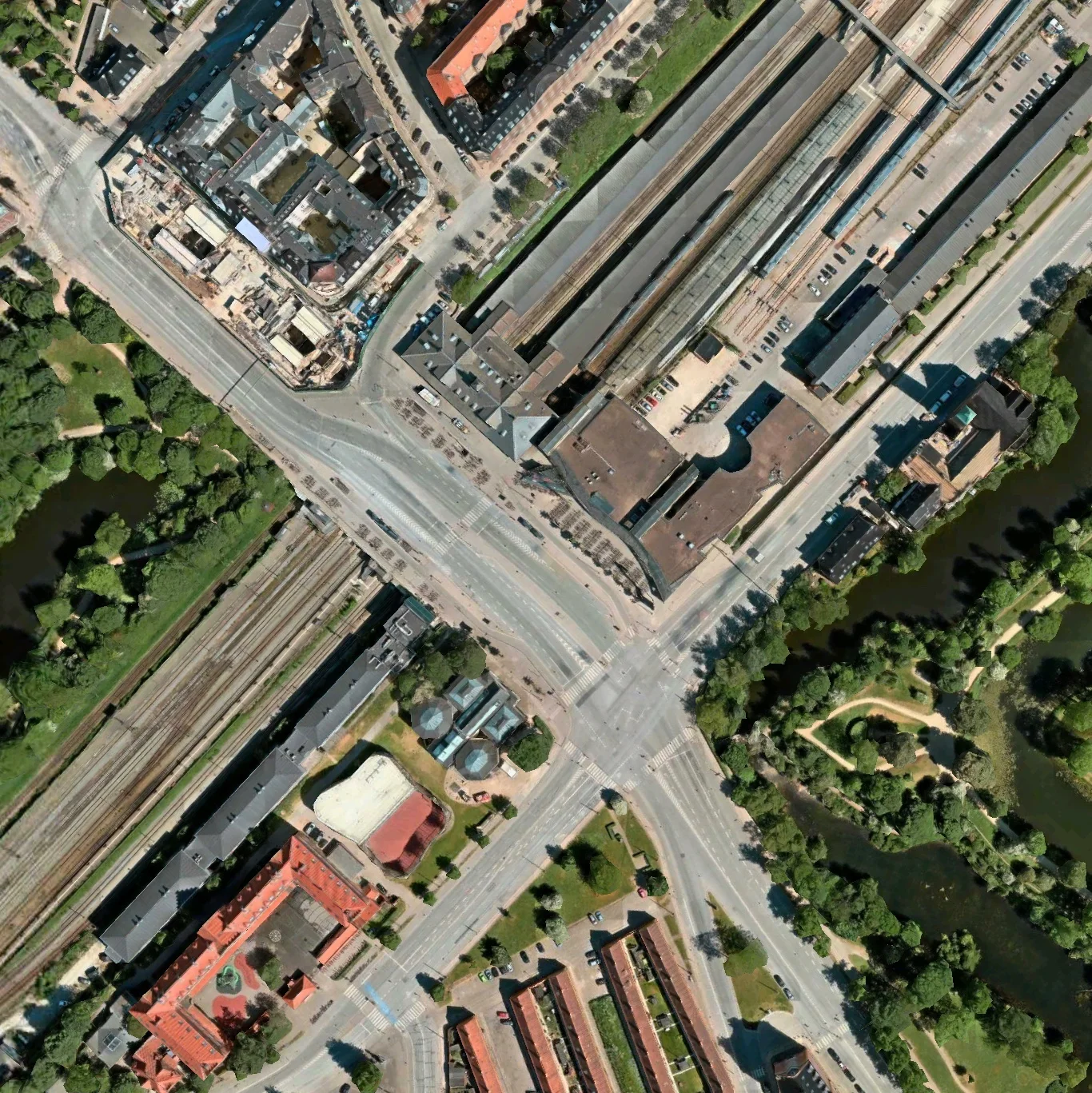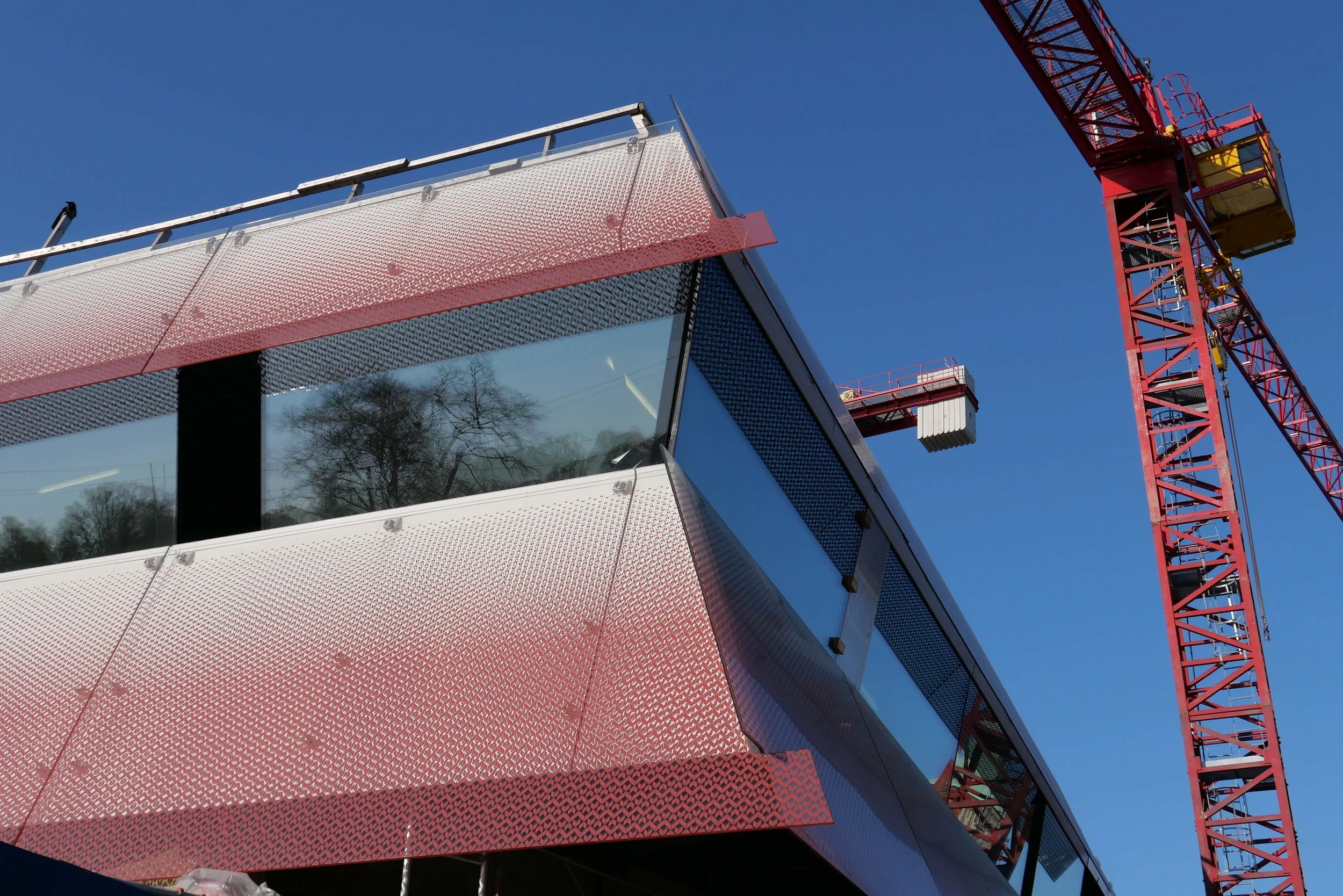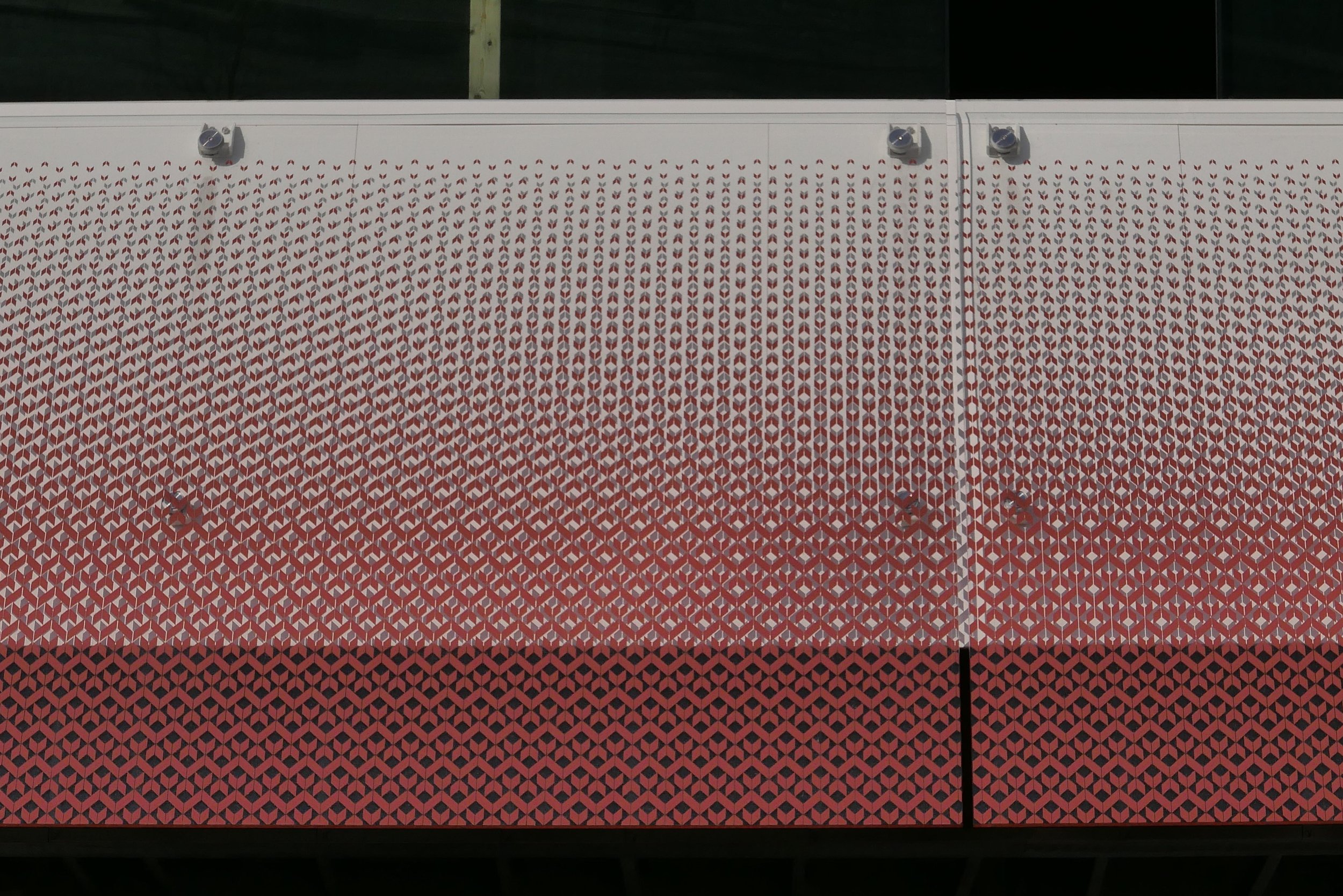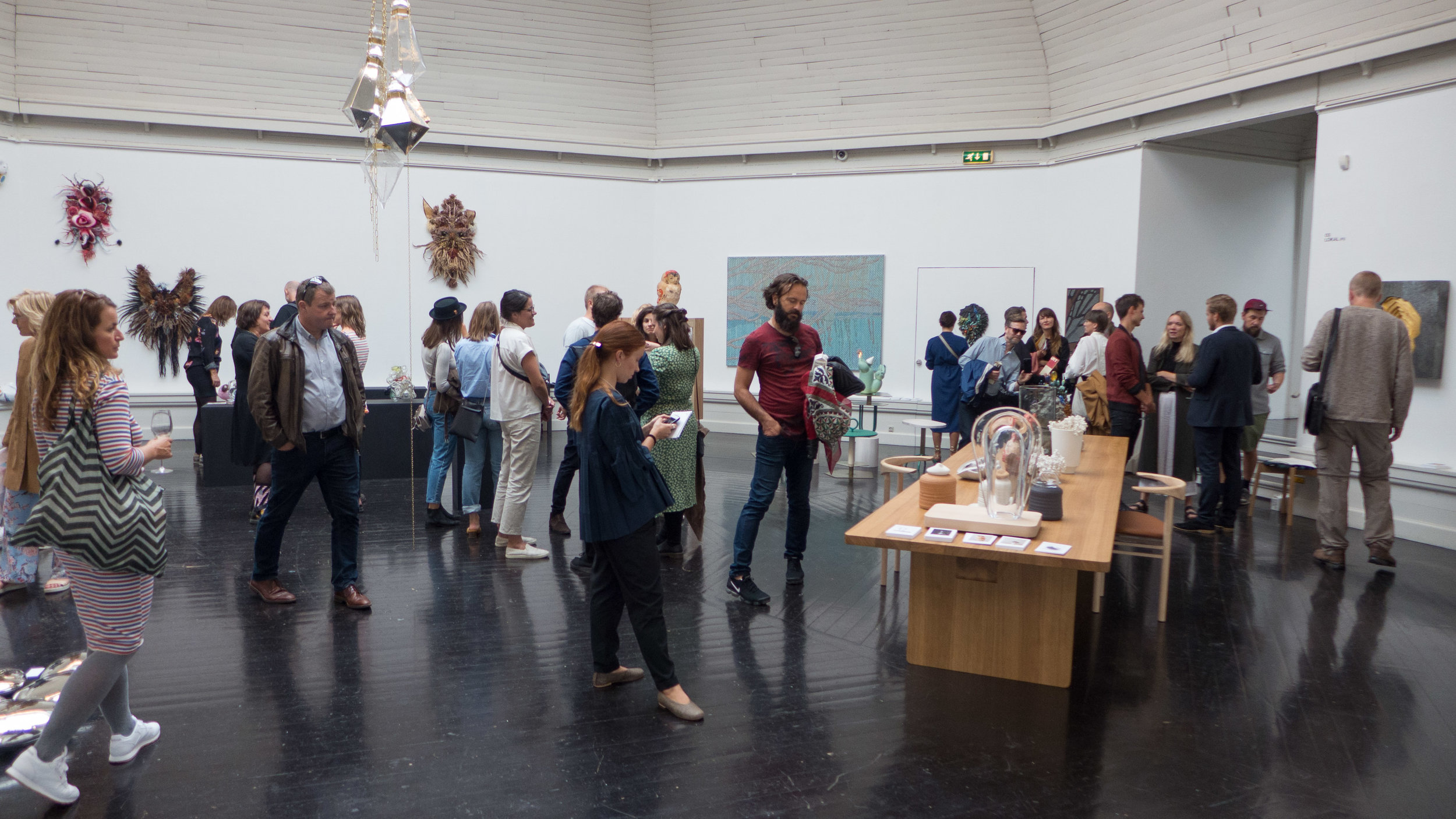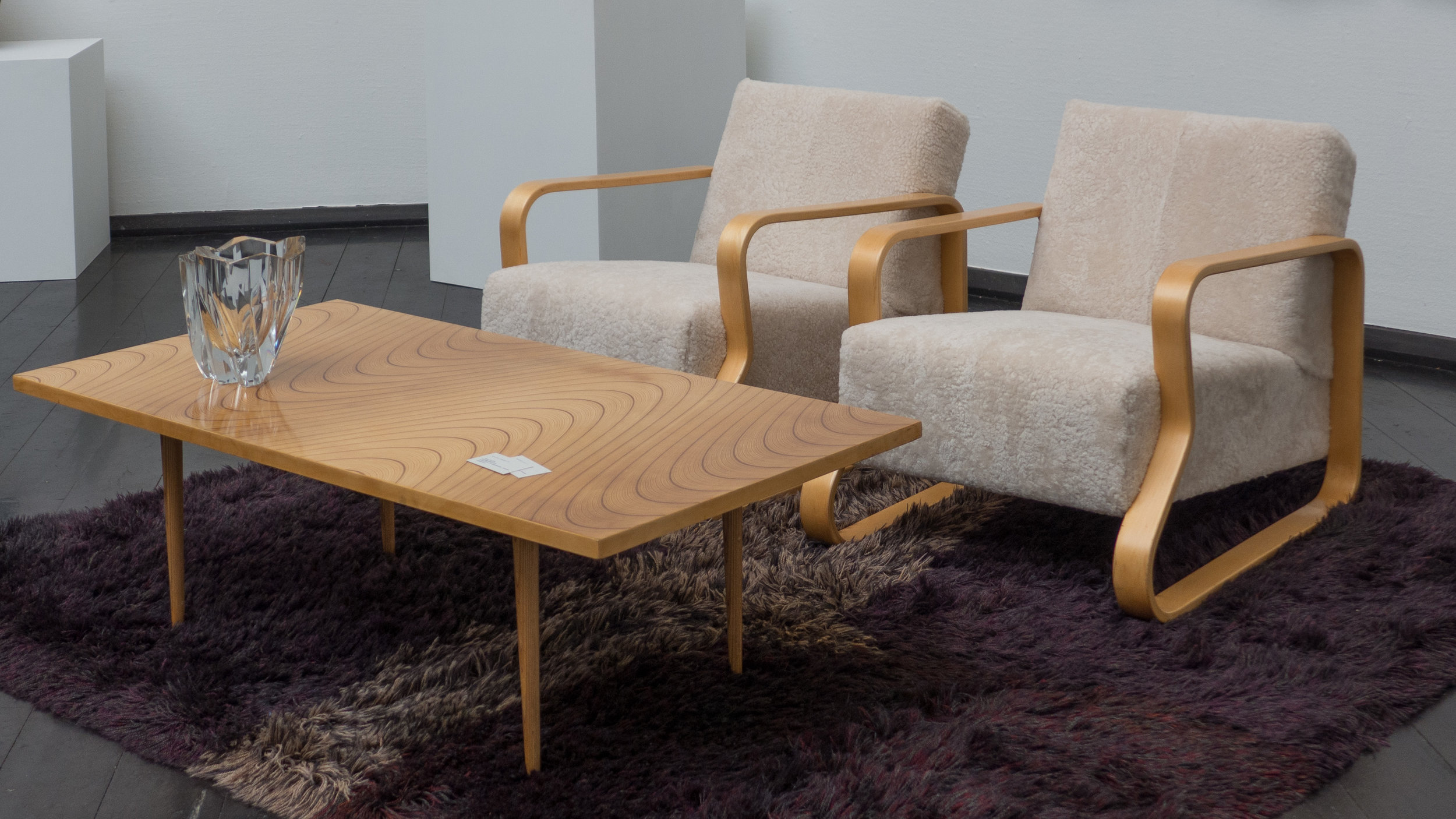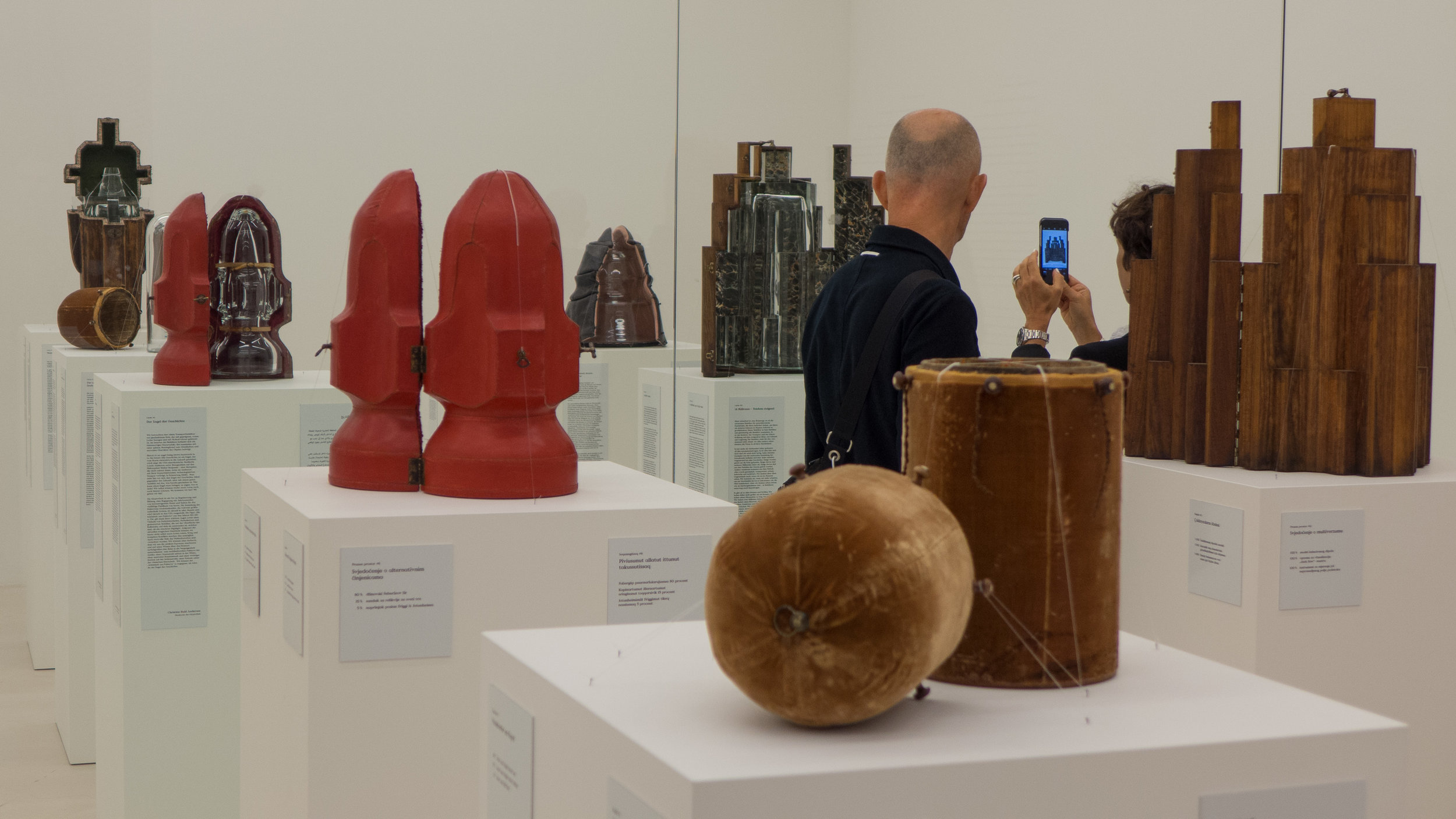Designed by the Copenhagen architects KHR - this building, on Oslo Plads in Copenhagen, is not finished but has, already, attracted a huge amount of criticism.
It has been described as looking like a collapsed cake; one national newspaper critic has suggested that it should be nominated for an award as the grimmest building in the city; someone on the board of a conservation society has demanded that work should stop immediately and members of the planning committee are already stepping back from their decision to give consent by saying that it looks nothing like the drawings.
It is not actually a new building but a dramatic remodelling of a single-storey and very brutal concrete block that was a supermarket and sports shop with an extension to the railway station - Østerport Station - immediately to the left in this view.
The building was L-shaped, facing onto both roads with a courtyard at a lower level to the back, in the angle of the L, where a new office building has been constructed.
The design was bound to be contentious because this is an incredibly sensitive site … the ornate station building dates from just after 1900; opposite the building - behind the camera in this view - is a very quirky wooden building that was used by a famous group of landscape painters and is now an art gallery - Den Frie - Gustafskyrkan - the Swedish Church on the other side of the road, to the right in this view, was completed in 1911 and is a very fine building and, more important, immediately behind the church is the Kastellet - the citadel - with ramparts dating from the late 17th century and one of the most important green spaces in the city.
An extra floor has been added above the supermarket but it is the odd, raspberry-sorbet colour of the glass cladding and the unrelenting horizontal line of the front that seems to be the problem.
A wider issue is actually one about road planning: this is an incredibly wide junction with traffic heading out of the city along the coast to Hellerup and Klampenborg to the north that crosses in front of the station and traffic for the Oslo Ferry terminal, traffic for the new district of Nordhavn - North Harbour - and tourists buses for the cruise ship terminals all head along the road past the church.
The solution, over the years, has been to make the roads wider and wider - to create separate filter lanes for dealing with the traffic lights - and this has taken away much of the pavement but it is hardly a ringing endorsement for a new building to say that it might look better set back beyond a deep pavement heavily planted with trees.


